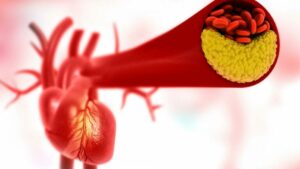Coronary Angiography: Examination, Procedure, and Aftercare
What is a coronary angiography?
Coronary angiography, also known as coronary arteriography, is a procedure that uses X-rays to create an image of the coronary arteries. This test also includes an assessment of left ventricular function. Coronary angiography can detect narrowings that cause chest pain or heart attacks, allowing for more personalized treatment.
Coronary angiography uses radiopaque iodine contrast agents. The principle is to visualize the coronary arteries supplying the heart. A catheter is inserted into a blood vessel to inject a contrast agent that mixes with the blood.
Why have a coronary angiography? What are the benefits?
Candidates for this procedure may include those experiencing chest pain triggered by exertion or those with other examinations suggesting a severely compromised artery.
This is particularly true when patients present several of the following cardiovascular risk factors:
- Hypertension;
- Smoking;
- Diabetes;
- High cholesterol;
- Over 50 years old;
- Family history of coronary artery disease;
- Acute or sudden pain in the chest or arm (during exertion or at rest);
Conversely, patients experiencing pain at rest, regardless of risk factors, should go to the emergency room immediately, as a serious acute condition, such as a heart attack, must be assumed. In this case, an emergency coronary angiography should be performed to identify the culprit artery that needs immediate opening. For example, if the patient is having a heart attack, the doctor performs a coronary angiography as soon as possible to resolve the problem.

What preparation is needed for a coronary angiography?
Preparation for a coronary angiography is straightforward:
- Renal function check with creatinine: Some patients require intravenous hydration before the procedure to reduce the risk of kidney failure;
- Medication management: Certain medications need to be stopped for a period of time. This is discussed with the attending physician.
Aftercare following a coronary angiography is generally uneventful, as it's performed under local anesthesia. Some discomfort at the catheter insertion site (wrist or groin) may occur but is short-lived.
With radial access (wrist), a splint is worn for 4-6 hours to control bleeding; with femoral access (groin), a compression dressing and immobilization are needed for 12 hours. The risk of complications is very low, and patients are generally mobile after about 6 hours.
EXPRESS QUOTE
You would like more information
Your health, our priority.
Request your free quote
What are the contraindications to a coronary angiography?
There are no absolute contraindications, but relative contraindications exist:
- Allergy to the contrast agent;
- Kidney failure;
- Severe uncontrolled hypertension (high blood pressure);
- Severe anemia;
- Severe cardiac arrhythmias;
- Active intestinal bleeding;
- Coagulation disorders;
- Electrolyte imbalances;
These factors don't absolutely preclude the procedure, but measures are taken before, during, and after, such as:
- Medication to stabilize hypertension, arrhythmias, and electrolyte imbalances;
- Appropriate pre-procedure preparation (e.g., cortisone for contrast agent allergies, diuretics and hydration for kidney failure);
These factors significantly increase the risk of complications.
How is a coronary angiography performed?
Coronary angiography visualizes arteries by introducing a contrast agent into the blood. The procedure involves:
- The patient is placed supine, and vital signs are monitored;
- After local anesthetic injection, a small incision is made in the groin to insert a catheter into the femoral artery. Less commonly, radial (wrist) or brachial (elbow) artery access is used;
- The catheter is advanced to the coronary artery ostium;
- A contrast agent is injected to visualize the arteries;
- X-rays of the left and right coronary arteries are taken (also visualizing the left ventricle and its contractility).
Patient cooperation is needed (e.g., breath holding or deep breaths as instructed). The entire 20-30 minute process is monitored on screen.
What is the aftercare after hospitalization or coronary artery examination?
After catheter removal, compression is applied to stop bleeding. If femoral artery access was used, the leg should be kept straight for 6-8 hours. Patients are advised to drink plenty of water to help excrete the contrast fluid.
What are the possible complications and risks of a coronary angiography: pain, allergies?
Coronary angiography is an invasive procedure with risks, although modern technology has minimized these. If less invasive alternatives are insufficient, the procedure is considered with a risk-benefit assessment. The patient is informed of potential complications by the specialist.
Local anesthesia renders the procedure virtually painless. A brief warm sensation may be felt after contrast injection.
Complications, while rare, range from mild (allergic skin reactions to contrast agents – allergy should be reported beforehand, hematoma at the catheter site, nausea/vomiting) to serious (severe allergic reactions, arrhythmia, stroke, embolism).